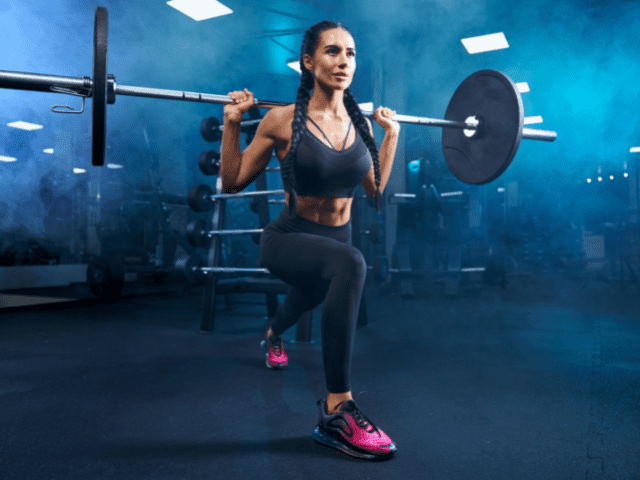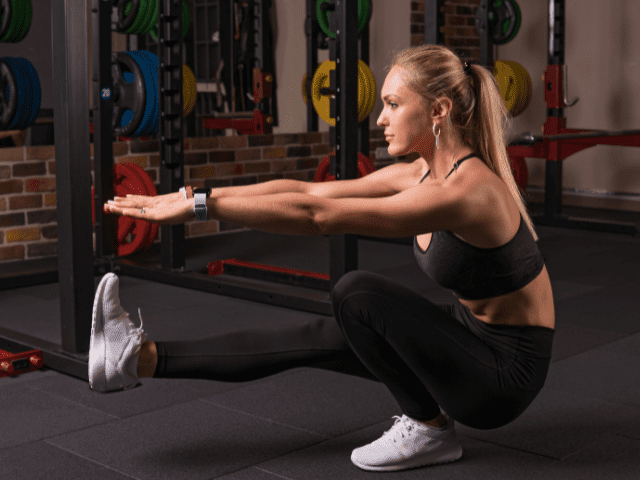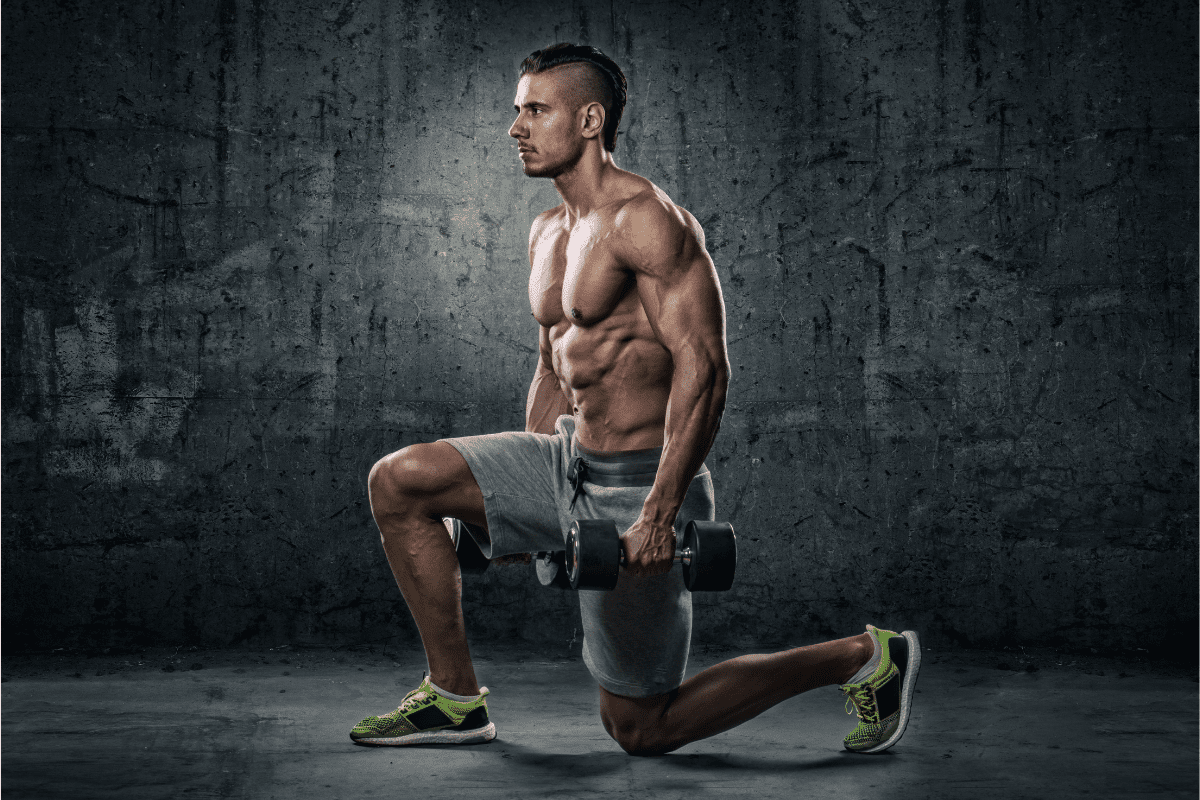Dumbbell Lunges (How To, Muscles Worked, Benefits)
Dumbbell lunges are a popular lower-body exercise that can help to strengthen the legs, glutes, and core muscles. They are a versatile movement that can be easily incorporated into any workout routine, whether you are just starting out or are an experienced lifter.
In this article, I will discuss the benefits of Dumbbell Lunges, the proper form and technique for performing the exercise, muscles worked, and offer tips and variations to help you get the most out of your workouts.
Whether you are looking to improve your balance, stability, or overall leg strength, Dumbbell Lunges are a valuable addition to your fitness routine.
How To Dumbbell Lunge
Equipment Needed
- Dumbbells
Muscles Worked
- Quads
- Hamstrings
- Glutes
- Secondarily: Grip (Forearm Flexors)
Instructions
- Grab two dumbbells, one in each hand
- Squeeze the shoulder blades and engage the lats to create a stable back to help with bracing the upper body
- Once you’ve created enough room for yourself from the dumbbell rack (or wherever you pulled them from) you can begin the movement.
- Step forward with one leg, giving yourself enough room to drop into a lunge comfortably without feeling overextended.
- Keep the chest as upright as possible and drop the back knee to roughly one inch from the floor.
- Now drive through the heel and midfoot of the front foot to drive yourself back up tall.
- Repeat on the opposite leg and alternate back and forth until all reps have been completed.
Coaching Points (Fixes to Common Mistakes)
When you step out, make sure to keep the feet shoulder-width apart. If you’re feeling very off-balance in your lunge there is a good chance that you are stepping the lead foot directly in front of the back foot (essentially placing yourself on a tight rope).
Keep the front foot flat on the floor when in the lunge position. One of the most common mistakes is raising up onto the ball of the front foot. One of the reasons for this is often the next most common mistake that I see with Dumbbell Lunges…
Make sure to take a big enough step. Often times I see athletes take way too small of a step. This leads to lunge being extremely cramped and can lead to a whole host of other issues (like coming up on the ball of the foot as mentioned above).
Benefits of Dumbbell Lunges
Single Leg Movements like Dumbbell Lunges are an extremely important addition to any athlete’s workout regimen, regardless of sport.
Many (if not most) athletic movements are often done on one leg. This includes sprinting, jumping and cutting.
Single Leg Exercises help improve leg strength, balance, stability and also show any strength imbalances the lifter may have from one side to the other. Single Leg Exercises can also be part of the solution if and when an asymmetry is found.
DB Lunge Variations
Dumbbell Walking Lunge
DB Lunges are generally done in place, stepping out and then driving back up to the starting position each rep.
If you want to cover some distance instead of staying in place you can switch to a DB Walking Lunge variation. When you step out into the lunge, drive yourself up bringing your back foot up to your front foot. Alternate legs as you go until the distance or total reps are completed.
Dumbbell Lunge Alternatives
If you can’t do Dumbbell Lunges, for whatever reason, here are a few alternatives that you may be able to try out.
Barbell Lunges

Don’t have dumbbells? Or maybe you’re not able to grip weight due to a finger/hand injury. In either case, you may be able to try Barbell Lunges instead.
Barbell Lunge is the exact same movement but involves placing a barbell on the back similar to a back squat. You’ll get virtually all of the same benefits of the Dumbbell Lunge with a Barbell.
The only instance that I would hesitate against using Barbell Lunges is if the athlete cannot hold an upright torso. Some athletes, due to mobility issues, hinge forward heavily at the hip during lunges. In these cases, I would recommend sticking with dumbbells until the lifter’s mobility is improved.
DB Step-Ups
If DB Lunges are uncomfortable for you, then Dumbbell Step-Ups may be a good single-leg replacement.
Some athletes find that Lunges, even with proper form, to be hard on their knees. Sometimes, Reverse Lunges may be a solution, but other times I’ll just have them switch to Dumbbell Step-Ups.
It’s still a great exercise to get in the needed single leg work, but without the same amount of stress placed on the knees.
Pistol Squat

Another good single-leg alternative for Dumbbell Lunges – that doesn’t require any equipment at all – is the Pistol Squat.
If you’re really good at them you literally need no equipment at all, but at most you’ll only need a box or chair to sit down to.
More Links and Info
If you’d like to see more Lower Body Lifts, head over to the Horton Barbell Exercise Library where I have a growing collection of step-by-step instructions all for free.

